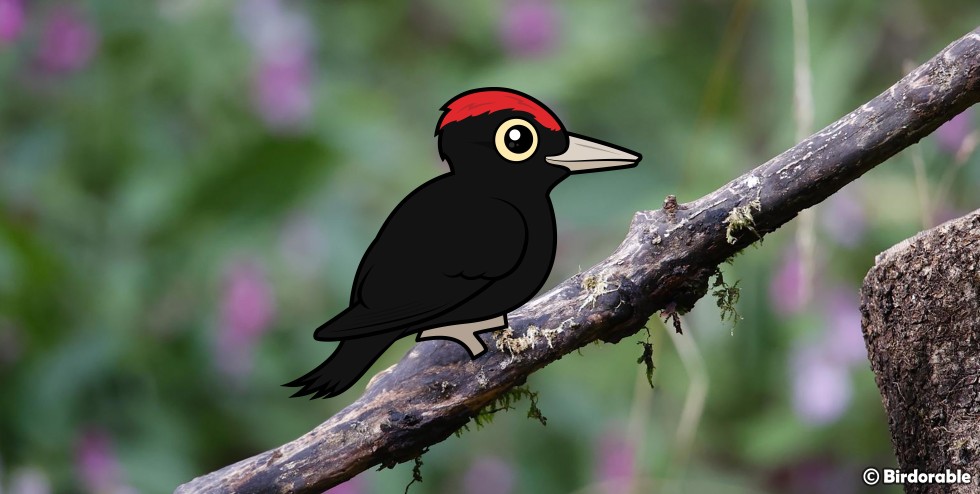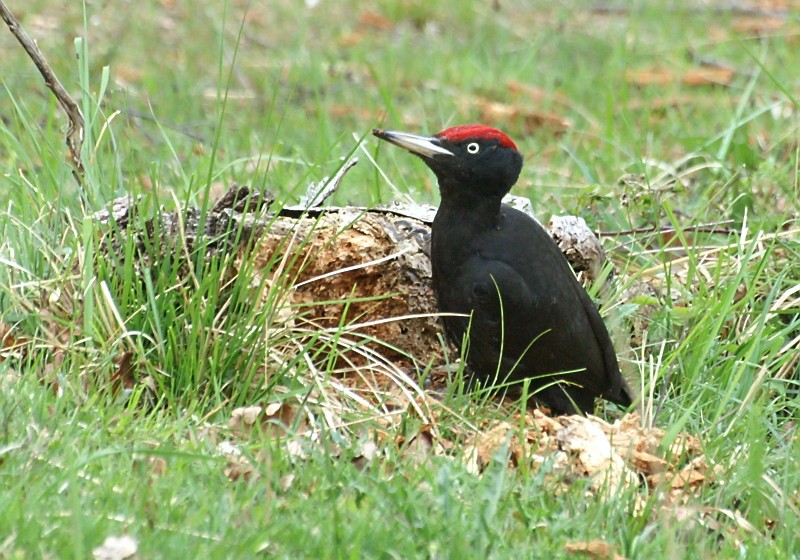A Closer Look at the Black Woodpecker: The Forest's Master Carpenter

If you've ever wandered through the dense forests of Eurasia, you might have been lucky enough to hear the deep, resonant drumming of the Black Woodpecker. This striking bird, cloaked in jet-black feathers with a bold red crown, is a sight to behold. Standing as the largest of the Old World woodpeckers, the Dryocopus martius carves out a niche in both the literal and ecological sense, playing a vital role in its habitat.
The Black Woodpecker, with its glossy black plumage, is not just a feast for the eyes but also a marvel of bird engineering. Its beak, a natural chisel, is designed to bore into the hardest of woods, creating intricate nests and searching for its favorite meal: wood-boring insects. These birds are master carpenters of the avian world, and their ability to excavate large cavities in trees not only provides them with nesting sites but also benefits other species that use these spaces for their homes.
Living primarily in mature forests across Europe and Asia, these woodpeckers have adapted perfectly to life in the woods. Their preference for old-growth forests, with plenty of dead or decaying trees, showcases the importance of preserving natural woodlands. These habitats are crucial not only for the Black Woodpecker but also for maintaining biodiversity and ecosystem health.
Despite their somewhat ominous appearance, Black Woodpeckers are shy and elusive. Spotting one requires patience and a bit of luck. Early morning is often the best time to catch a glimpse of these birds as they go about their daily routines of foraging and nest-building. Their distinctive call, a loud and clear "klee-yee," can echo through the forest, serving as a beacon for birdwatchers.

Black Woodpecker by Stefan Berndtsson (CC BY 2.0 DEED)
The breeding season brings out another interesting aspect of Black Woodpecker behavior. They are monogamous birds that put a lot of effort into their nesting sites, which they return to year after year, continuously improving and expanding them. The male takes the lead in nest excavation, which can take up to two weeks—a testament to their dedication and work ethic.
Conservation efforts for the Black Woodpecker have been relatively successful, with the species maintaining a stable population in most of its range. However, they are not without threats; habitat loss due to deforestation and the removal of dead trees, which are often seen as unsightly or dangerous, can have detrimental effects on their population. Thus, conservationists emphasize the importance of preserving old-growth forests and standing deadwood, vital components of the Black Woodpecker's habitat.
The Black Woodpecker's role in the ecosystem extends beyond just being a magnificent bird to observe. By creating nesting cavities, they provide habitats for a variety of other species, including bats, owls, and other small mammals and birds that cannot excavate their own nesting sites. This makes them a keystone species, underlining the interconnectedness of forest ecosystems and the importance of each species within it.
For those passionate about birds, the Black Woodpecker represents the mystery and allure of the forest. Its presence is a reminder of the wild, untamed beauty of nature and the need to protect and preserve our natural habitats. Whether you're a birdwatcher, a conservationist, or simply someone who appreciates the wonder of nature, the Black Woodpecker is a bird that captivates the imagination and inspires a deeper appreciation for the natural world.













Comments
Leave a comment
Thank you!